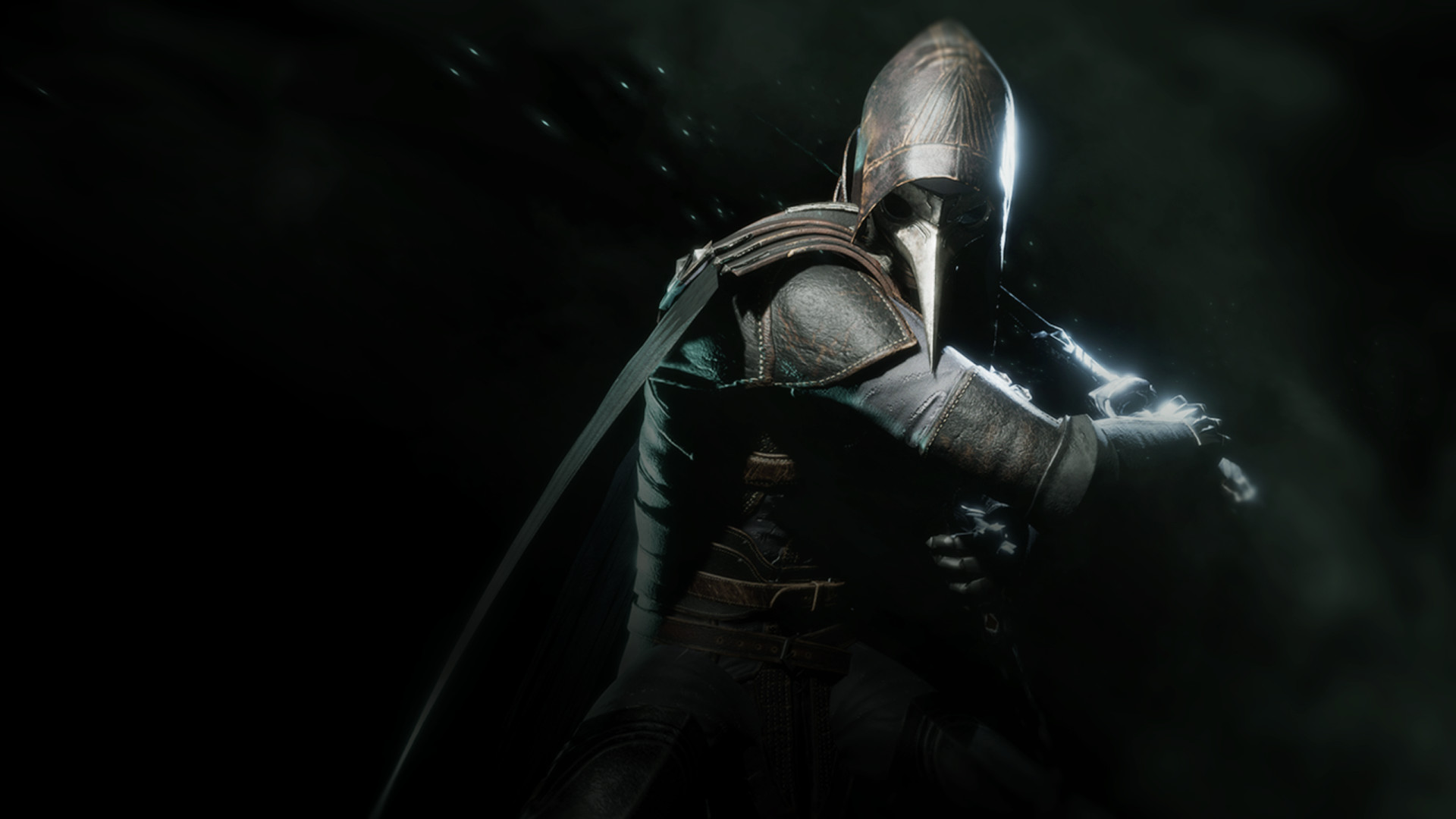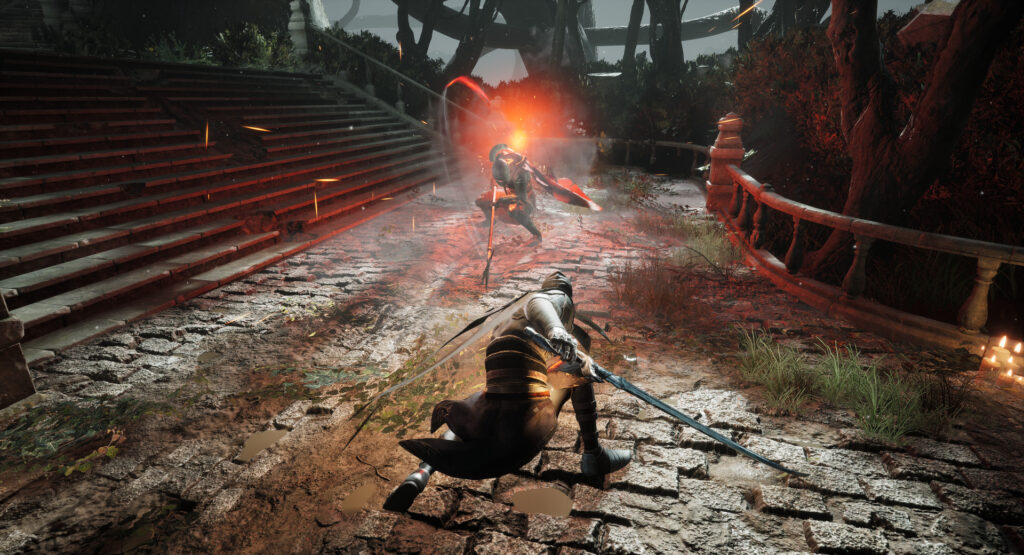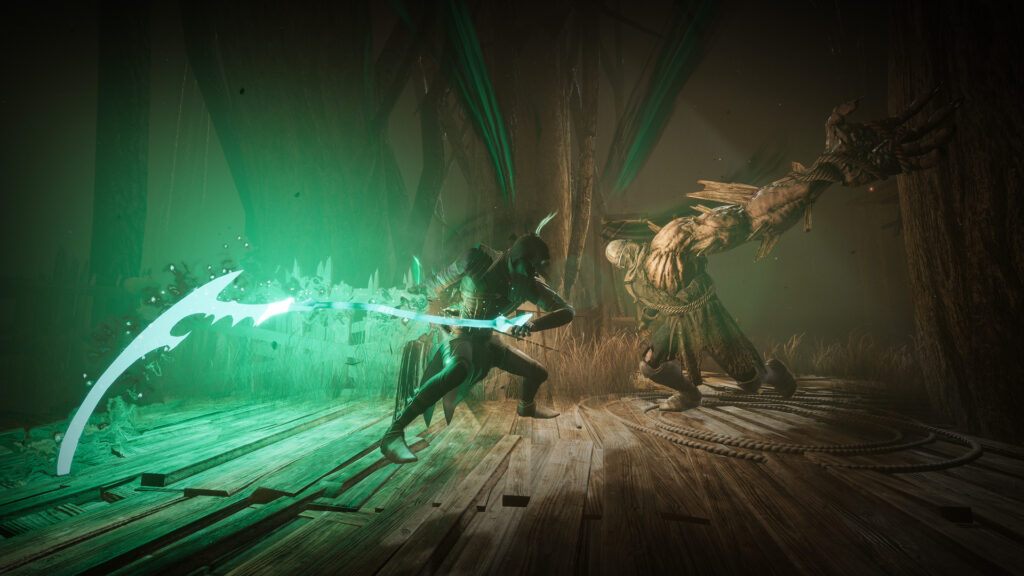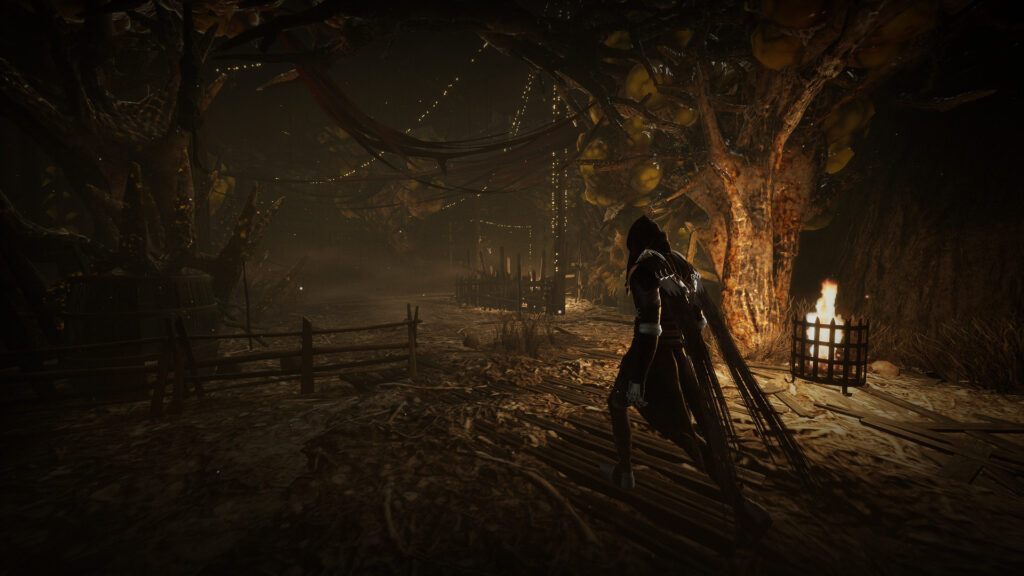Title – Thymesia
Platforms – PS5, Xbox Series X/S, PC
Release Date – August 18th, 2022
Developer – Overborder Studio
Publisher – Team17
MSRP – $29.99
ESRB – M for Mature
Disclaimer – This product is being reviewed on the PC. A review copy was provided by Team17 Industries for the purpose of this review. This review may also contain spoilers for certain gameplay and story elements. Watch at your own risk, you have been warned. Gaming Instincts is an Amazon Affiliate and does gain financial benefits if you choose to purchase this product on this page.
Here we go yet again, another indie developer taking a stab at the soul’s formula. This time, it’s a game called Thymesia, which takes place in the Victorian era, much like From Software’s popular PlayStation 4 hit, Bloodborne. There is no denying that From Software has grabbed many RPG and gamers by their balls over the last decade with Dark Souls.
The Dark Souls franchise has been so influential that even massive triple-A titles such as God of War and the upcoming God of War: Ragnarok take some inspiration from it. Things like large text displayed in front of the screen when the player enters a new area accompanied by an iconic musical queue, open-ended exploration, and well-designed shortcuts are all mechanics influenced by Dark Souls.
Understandably, many developers who are passionate fans of video games want to make their own spin on the soul’s formula, or rather create a world with their own twists and turns that gamers may appreciate. But with all that ambition and new ideas comes a substantial challenge. Welcome to our review of Thymesia.
The World of Thymesia
The story and setting of the game take place in the Kingdom of Hermes. Alchemy was used throughout Hermes to heal the plague, but eventually, the price became too steep, and the practice of alchemy ceased. Because of this, the plague spread far and wide across the kingdom. Hermes is now full of dreadful beings filled with corruption and diseases.
You play as a powerful character named Corvus, determined to fight the plague that has infected Hermes and its denizens. Corvus will explore his memories to find out how everything happened. It’s an interesting take on the whole idea of the plague and disease trope, and it’s nice to see another game in the Victorian London-like era.
While the fundamental setup is easy to understand, it won’t matter much if the gameplay and combat aren’t well-executed. So with that said, let’s discuss the elephant in the room here. How does Thymesia play and feel compared to other souls-like titles?
The Combat and Pacing
Gameplay is king when it comes to the Souls genre. Hell, the gameplay is a king pretty much in every game. You can have all the bells and whistles you want, but if the gameplay is complete crap, repetitive, and not fun, then nothing else will matter. I wasn’t blown away by the gameplay in Thymesia but what I will tell you is that this is one of the better indie games I’ve played that tries to mimic the souls genre
Thymesia plays like a mix of the classic Dark Souls formula and Sekiro’s combat elements with a unique twist in its combat system. Most souls like indie games try too hard to make the game either exactly like its From Software counterparts or simply fail to execute a good and satisfying combat system as a whole. There is also no stamina management whatsoever, so you are free to dodge and run as much as you want.
In Thymesia you don’t have traditional weapons like in most souls games. Instead, you are equipped with daggers. One dagger is for regular light attacks that hurt or wound the enemy. While the other has a deflect function. Anytime the player lands a hit with a light attack or deflects a single hit from the enemy, a tiny bit of health gets taken off, and a large teal-colored health bar appears over their original health bar. The teal color indicates how much health the enemy is wounded. There are no heavy attacks like in the Dark Souls franchises or Elden Ring. Players use R2 to land a plague attack using Corvus’s claw instead. If the claw lands a hit on a wounded enemy, then they take massive damage, and the actual health will deplete.
The best way to think about it is like an onion. There is an additional layer that you have to go through to take off the enemy’s health. At first, I wasn’t a big fan of it, but as I played for many hours and continued to level up and progress, I grew to like it. It also made me realize that the developer tried to create something unique and different that felt familiar yet fresh. The best part is that it works well and is built around the lore and setting of the game. It’s fun to use, and it nails that combat fantasy of fighting in a world full of plagues and diseases.
The leveling in the game is also different than in the traditional souls games. Yes, you get a currency every time you kill an enemy and then use that currency at a beacon to level yourself up. However, there is no such thing as intelligence stats, faith stats, or any of those other stats that you normally have in Dark Souls or Elden Ring. Instead, they are only three attributes: Strength, Vitality, and Plague. Strength, as you can imagine, increases your regular weapon attacks and the number of wounds you can cause. Vitality increases your health as always, and Plague increases your claw damage and energy. Energy is equivalent to mana and is used to attack with your equipped plague weapons. You can replenish your mana by landing a hit on a wound with the claw.
Every time you level up, you also gain a talent point that you can spend in various talent trees. There are a total of 6 talent trees, including Saber, Deflect, Dodge, Claw, Feather, and Strategies. These are self-explanatory and contain a variety of buffs and additional ways to customize your character that is best suited for what you find the easiest and most enjoyable at the same time. They are not very complex, quite basic actually. If you are looking for a super in-depth fancy RPG number crunching theorycrafting then I am afraid you won’t find it here, and, in all honesty, that’s fine. There is no need for a game like this to be overly complicated. Thymesia is an action RPG and not a hardcore RPG where you have 10 million different stats and abilities that come into play.
Another thing that Thymesia does differently is the way it handles the potion system. You can upgrade a variety of potions and increase their potency, how many you can carry, and ingredient slots. You can craft upgrades by finding an item called Alchemy Enhancer, which is usually dropped by powerful enemies found throughout the levels. Once these enemies are killed, they do not respawn.
Your saber is permanent, so you won’t really ever have a different physical weapon. Instead, you can equip Plague weapons that can be used, if you have enough energy. You get these weapons by collecting their shards. The shards are usually carried by enemies who use those specific weapons. Once you’ve collected enough shards, you can then proceed to unlock these weapons through the menu. If you have any more additional shards of that same weapon, you can upgrade them as well. It’s a neat and simple system, and, yes, you can respawn enemies and kill them until you get enough shards if you wish. However, I never felt the need to do that to progress through the game, but if you wish to do so, then you may.
There are several plague weapons, including hammers, fists, greatswords, scythes, and many others. As you can imagine, each of those has different functionalities. You can also spec into more buffs for the Plague weapons in your Plague talent tree in addition to the individual upgrades of the weapon itself. Sadly, we did not have enough time to see how a variety of builds would work out in Thymesia in terms of usefulness. Although, we are quite positive the best soul runner challengers will find some broken stuff quite early on, so keep your eyes peeled on that.
Last but not least, Corvus can also turn into a part of a raven and throw out feathers to hurt his enemies for some wound damage. In addition to that, stronger enemies also tend to do unblockable attacks from time to time. When an enemy does an unblockable attack, their weapon sparks out green lines of energy. When that happens, if you throw out a feather at the right time, that attack will get deflected, and they will get stunned and wounded. This is Thymesia’s version of the parry, but it can only be done with the feathers. There are no such things as critical hits or backstabs either.
Overall, I commend the dev team for actually trying to come up with a fresh twist on the combat system and create something a bit more unique and stylized than your standard copy and paste souls like combat system. It fits the lore, has enough substance for the budget they had, and is fun to play with. The combat also feels smooth, not sluggish, and the animations are pretty slick as well.
Now the pacing is another story. I believe that this is the game’s biggest downfall. I am not a big fan of how the whole game is structured. It doesn’t have a single interconnected world that the Dark Souls games are known for. The levels themselves also feel very outdated in terms of level design, and it reminded me of games I would play on my PC back in the late 90s and early 2000s.
When I played Thymesia, I felt like I was a rat trapped in a maze. Just for the record, the most expensive part of video game development is usually the art assets. The game is broken into a variety of different themed levels. In one area you are on tree tops, the other in a garden and then a castle. The development team was limited on budget, so get ready to see a ton of reused assets and samey-looking environments.
The layout of the levels is also not that great either, sometimes it’s a bit hard to figure out where to go. I know that seems quite weird coming from someone who loves souls games, and the best part of a souls game is usually the exploration. The difference is that these levels are extremely linear, and exploring them in this game is not fun. There are no real off-beaten paths that take you to special places, at least not that I have encountered. You start from one end of the map and try to get to the boss at the end. After you beat the boss, you are teleported to a small hub.
There is not much to explore in the hub, and you use a map to teleport to new places. This is why the level design feels extremely outdated. I feel that even with a smaller budget, they could have done something a bit more interesting with the level design. It doesn’t have to be grand or Elden Ring levels of complexity, but what is here is simply too limited in that department. A game can still be very linear and fun to explore, but that’s not the case with Thymesia.
Conclusion
Overall, Thymesia is a decent souls-like indie effort compared to some other ones we’ve seen and played in the past. The game won’t rock your socks off, but the combat system and the setting are quite enjoyable. There is also no multiplayer functionality whatsoever, no PvP or co-op. That may be an issue for some people and others not so much. It’s a decent game to go through once, but that’s probably about it, thankfully the game is only $29.99. The pacing and the level design hurt it the most, but the combat is not bad and is worth trying out. Thymesia will be receiving a final verdict of 7 out of 10.
Stay tuned at Gaming Instincts via Twitter, YouTube, Instagram, and Facebook for more gaming news.







